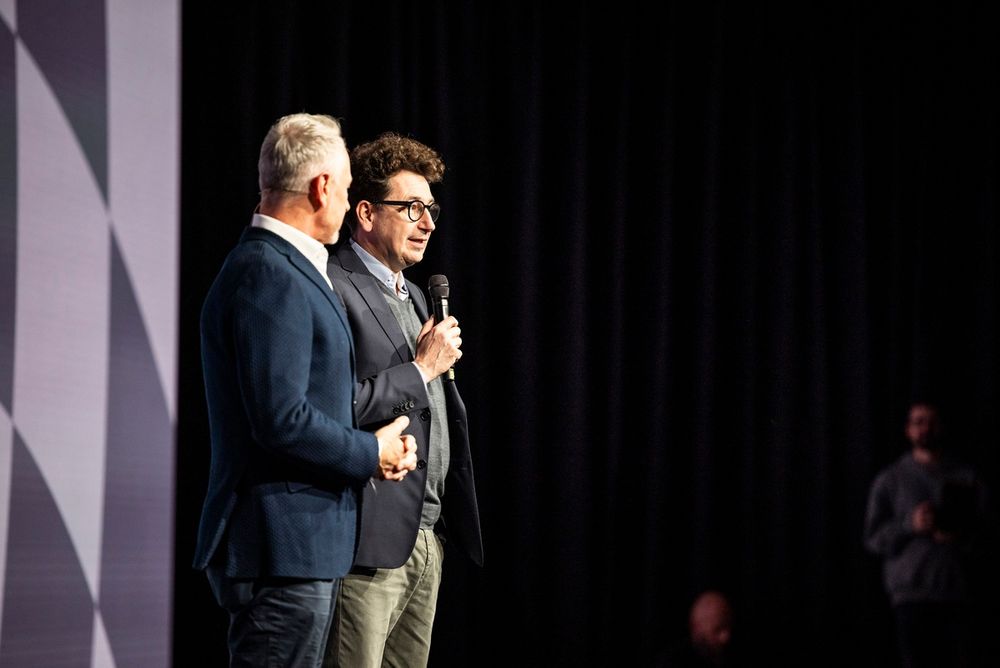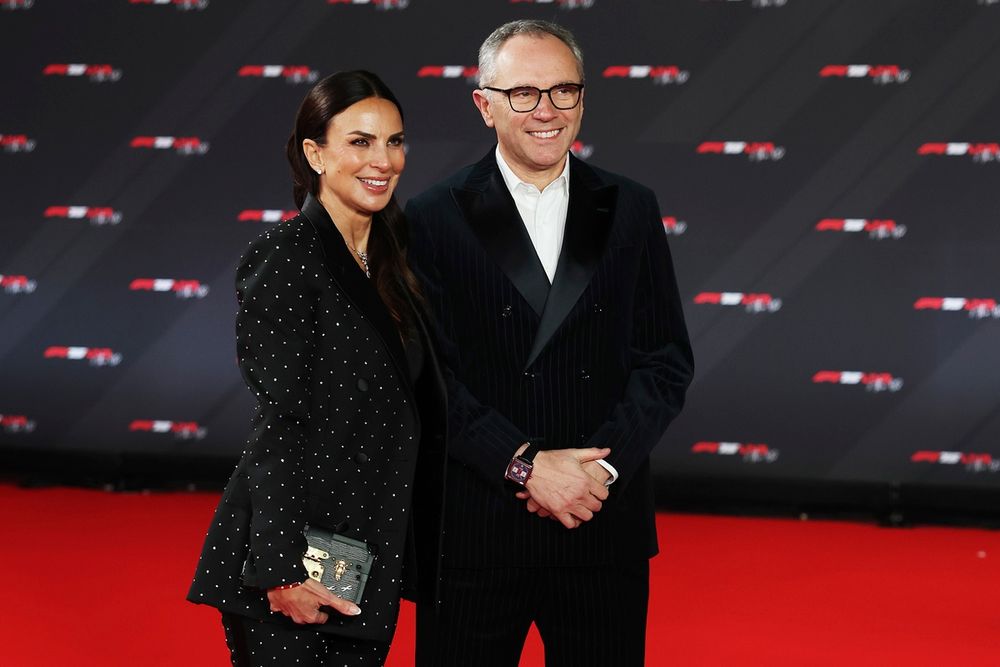On Wednesday night Audi kicked off its 2026 entry with a launch event in Munich, showcasing a concept livery for its first-ever Formula 1 challenger.
Here’s what we learned from the event about Audi’s approach and ambitions.
1. Audi views F1 as long-term project and wants to win titles by 2030, but thinks it can «compete» before
There has never been any doubt that Audi sees its F1 project through a long-term prism, and the manufacturer’s ambition to fight for the world championship by 2030 had been communicated already. But it was interesting to hear Audi CEO Gernot Doellner set out his expectations for the entire five-year period leading up to what he hopes will be success.
«The next two years we will be ‘challengers’,» he said. «We have to improve from where we are today and have ambitions also for 2026 and 2027. These years are the ‘challenger years’ and from there we want to become, from 2028 on, real competitors and then from 2030 on to fight for the championship.»
The marque’s long-term investment and huge upfront cost of entering F1 also reflects why it has been so vocal against FIA president Mohammed Ben Sulayem’s idea to fast-track the next generation of regulations, which was quickly shot down. «We made it clear that we are absolutely happy with the regulations we have from 2026 on and that we need quite some years of stability because we can’t change to fundamentally different regulations within a two-year period,» explained Doellner.
«That is economically not possible not only for us but for all the other teams. If there’s a next [set of] regulations to be defined, it has to be further in the future with a timing around 2029 or 2030 and not before that.»
Audi F1 Team RS26 concept livery
Photo by: Audi Sport
2. Audi sees dual chassis and power unit challenge as a must
Audi seems to understand that success in F1 doesn’t magically manifest itself overnight, and it has a mountain of work to do both on the power unit side in Neuburg and on the chassis side at Sauber’s headquarters in Hinwil.
Taking control of both sides at once is quite a risk, taking on the might of F1 power unit manufacturers Mercedes, Ferrari and Honda from year one. But according to former Ferrari team principal and engine chief Mattia Binotto, who joined the Audi F1 project as its CTO and COO, keeping both the chassis and engine development in-house was a ‘must’ to be successful.
«In order to become successful and a winning team in the future — yes, it may add complexity — but it’s a requirement. Having the full control on both the chassis and the power unit gives you a competitive advantage, a technical advantage. And because for Audi, it’s not only about participating, but it’s about winning. It was like a given, I would say. So, we accept the complexity because we have a clear ambition.»
3. Audi CEO Doellner has now bought into F1 project
Audi’s decision to join F1 — first as a power unit manufacturer before buying into Sauber — was a decision that predates Doellner, taken by then-CEO Marcus Dussmann.
That prompted questions on whether its incoming CEO was as keen on the expensive expedition as his predecessor was. But Doellner says that F1 is «now absolutely my project», having been behind plans to fast-track its takeover of Sauber in 2024 because he felt its original plans were not cutting it.
«When I took over the role as CEO of Audi two years ago, we had a relatively early project review of the Formula 1 project as we had reviews of every project within Audi after I stepped in,» Doellner said. «We analysed that to become successful in Formula 1 we needed an even more ambitious project set up than the one I found.
«We decided to take over the Sauber team earlier than in the original plans and to bring in an external investor [Qatar’s sovereign wealth fund] to make the project the right one to become successful. With that decision, we set up our new management team and now it’s absolutely my project.»

Gernot Doellner, Audi CEO
Photo by: Audi Sport
4. Improved 2025 form is making Audi transition easier
A dismal and demoralising 2024 campaign, in which Sauber only managed to score points at the tail end of the season, showcased just how much work was ahead to turn Audi’s future factory team into a competitive force.
But the German brand’s exercise has been made easier by Sauber’s resurgence in recent months, with Nico Hulkenberg taking a long overdue podium in Silverstone and the team genuinely challenging for points on any given weekend. According to team principal Jonathan Wheatley, that return to the thick of the action in F1’s tight midfield has given Hinwil a real spring in its step.
«Audi’s investment and belief in the team is extraordinary and the team feels it,» said the former Red Bull man. «Every single day we can feel the progress we’re making and the team’s starting to believe in itself now. And this is so important in terms of building momentum and moving forward.
«It’s a very exciting workplace at the moment. And I think if you want a manifestation of that, the team almost performed the incredible in Brazil last weekend in building a brand-new car for Gabriel in an incredibly short period of time. This team would not have been able to do that a year ago and that doesn’t come from tools or investment, that comes from spirit and from the team believing in itself.»
5. Audi’s design language is a big departure from Sauber
If Wednesday’s Munich launch made one thing crystal clear, it’s that the new team will be… very Audi. The crisp, almost mechanical design language of its 2026 concept livery — which featured a lot of black and silver as well as red hues, contrasts starkly with the current Sauber team, including its partnerships with streaming platform Kick, online gambling company Stake and its bold black and acid green livery.
Audi will no doubt be stamping its new identity and design language on Sauber’s Hinwil headquarters as well, which will see huge upgrades including a new staff campus. Audi has also commissioned a new motorhome to replace the previous installation which served the squad since its BMW years. So, while the majority of staff will remain the same, including 2026 drivers Hulkenberg and Bortoleto, the new squad will have a distinctly different look and feel about it.

Jonathan Wheatley, Audi Team Principal and Mattia Binotto, Head of Audi F1 Project
Photo by: Audi Sport
6. Audi can learn as much from F1 as F1 can learn from Audi
One accusation often levelled at car manufacturers entering F1 is that they assume whichever methods made them successful in the car industry will translate one-to-one with F1, which is a vastly different business. Doellner’s comments suggest Audi won’t fall into that trap, and that while Audi feels it can bring some of its methodologies to the team, it can also learn a lot from the speed at which an F1 squad operates. Doellner will meanwhile leave the running of the team in the hands of the Binotto-Wheatley tandem.
«Definitely, Formula 1 is totally different from series production car development,» he acknowledged. «The Formula 1 project will be handled by the Formula 1 management team, Mattia and Jonathan. And it’s our goal as corporate Audi to really protect the Formula 1 team in speed and in their set-up.
«Of course, Audi can help with some methods, technologies in the background. But we do that in a very structured process. And on the other hand, I would say that corporate Audi can learn a lot regarding teamwork, team set-up and speed. And we are trying to balance that and to learn on both sides.»
But Audi wouldn’t have signed up if it hadn’t been for F1’s new 2026 engine rules and its push towards sustainable fuels, so it is expecting to see a tech transfer in those areas. «To me the spirit of F1, when it comes to how to develop a car and a lot of aspects of the F1 car, is highly relevant for the series production car, especially the idea of having regulations that start with efficiency and sustainability,» Doellner added. «Our technology transfer in quite some areas will also be visible.»
7. Domenicali appearance shows how much F1 values Audi
Alongside Doellner, Binotto and Wheatley, F1 CEO and president Stefano Domenicali also made an appearance in Munich, which shows just how much F1 management and its owner Liberty Media value the German brand’s addition to the paddock.
In Audi, F1 has found another willing partner to help grow the championship, especially in the all-important North American market. It was no coincidence Audi invited several specialised US media to its press junket, and the German giant is known to be holding conversations with various promoters over 2026 hospitality options and other campaigns.

Stefano Domenicali, CEO of the Formula One Group and Silvia Colombo
Photo by: Getty Images
«F1 needs to be relevant, and the fact that we receive a new manufacturer in our sport means that the relevancy from the technical perspective is one point that has been achieved,» Domenicali said. «Otherwise, such an important manufacturer like Audi wouldn’t embrace this new adventure.
«We want to make sure that the relationship with Audi will stay as long as possible. I don’t even want to put sort of an end [date on it], it’s just starting. So, I can take the opportunity to thank Gernot for the invitation, it means a lot to me for many reasons. But really, it is the start of a new era of Formula 1.»
We want to hear from you!
Let us know what you would like to see from us in the future.
— The Autosport.com Team








